

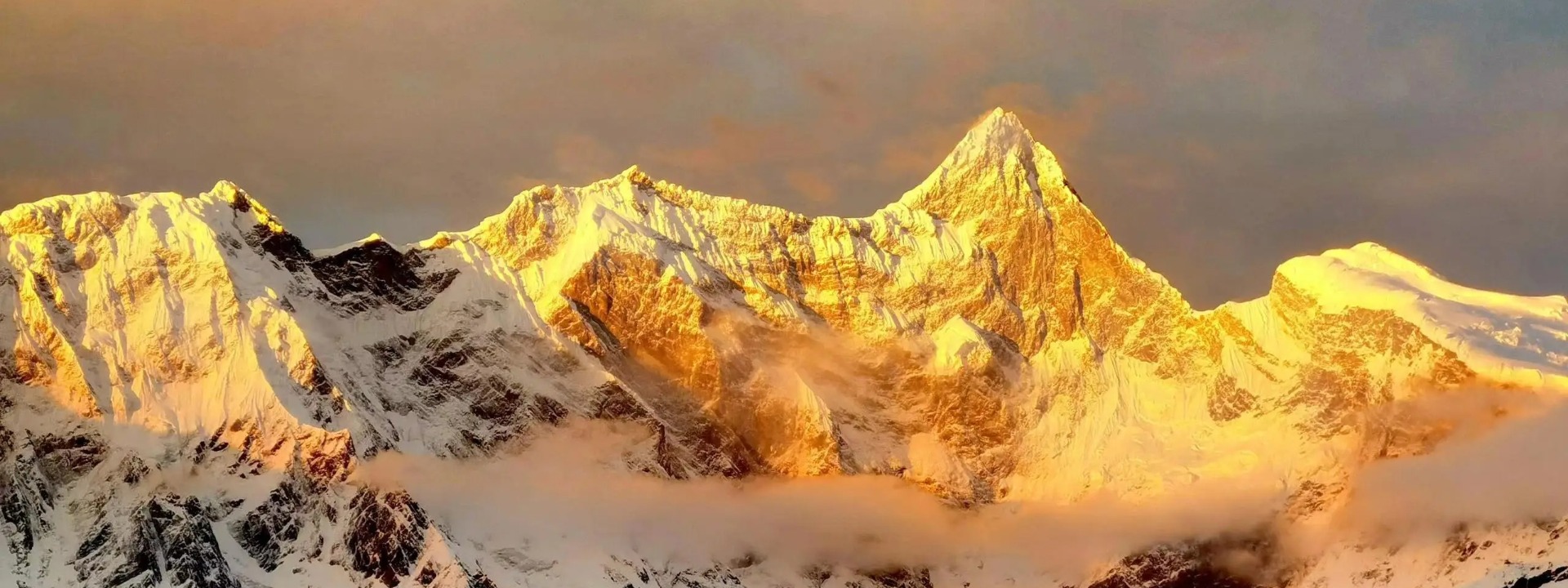
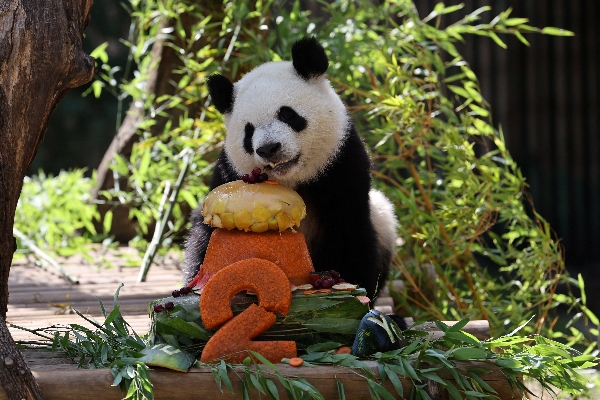
Embark on a 13-day China Tour with Tibet Exploration, visiting iconic sites like the Great Wall in Beijing and the Potala Palace in Lhasa. Experience China’s rich culture, history, and breathtaking landscapes. You can provide any of your clients’ needs and our DMC can plan a unique solution.
Beijing (3 Days): Day 1 ~ Day 3
Xian (2 Days): Day 4 ~ Day 5
Lhasa (3 Days): Day 6 ~ Day 8
Chengdu (2 Days): Day 9 ~ Day 10
Shanghai (3 Days): Day 11 ~ Day 13
When you arrive in Beijing, our guide will meet you at the airport or train station. You'll be taken to your hotel in a private, comfortable vehicle. Once checked in, you’re free to explore the city on your own.
If you’d like, ask our guide for suggestions on nearby attractions and tips for your day.
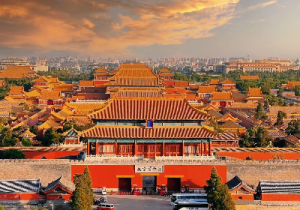
Forbidden City
After breakfast, our guide and driver will pick you up from your hotel. We’ll begin by visiting Tiananmen Square, the world’s largest city square. From the square, we’ll head towards the Tiananmen Rostrum to enter the Forbidden City.
The Forbidden City, home to 24 emperors from the Ming and Qing dynasties, is a masterpiece of Chinese architecture. Its grand halls, courtyards, and detailed carvings offer a deep insight into China’s imperial history and culture.
After lunch at a local Chinese restaurant, we’ll visit the Temple of Heaven. This UNESCO site was used by emperors to pray for good harvests. The temple’s design and cultural significance make it a must-see in Beijing.
In the evening, we’ll enjoy a delicious Peking Duck dinner.
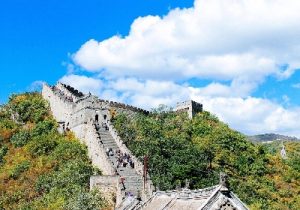
Mutianyu Great Wall
In the morning, we will drive for about two hours to the Mutianyu Great Wall, one of the best-preserved areas. The wall stretches along mountain ridges, winding through a beautiful landscape like a dragon. For your convenience, we'll arrange round-trip cable car rides. You’ll have over two hours to explore the wall, its watchtowers, battlements, and Ming Dynasty bricks, which have stood the test of time.
In the afternoon, we will return to Beijing to visit the Summer Palace, a UNESCO World Heritage site built during the Ming Dynasty. This peaceful garden features Kunming Lake, the colorful Long Corridor, and the famous Marble Boat, offering a glimpse into China's imperial history.
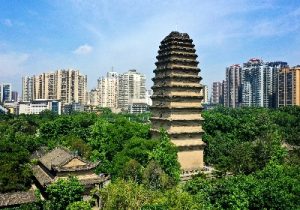
Small Wild Goose Pagoda
Your journey starts with a bullet train ride from Beijing to Xian. Once you arrive at Xian railway station, our guide and driver will meet you and take you to your hotel for a brief rest.
Afterward, visit the Small Wild Goose Pagoda and the Xian Museum. The pagoda, built during the Tang Dynasty, is a fine example of ancient Chinese architecture. It’s located in a peaceful park and offers a glimpse into Xian’s rich history. The Xian Museum nearby displays a large collection of artifacts, including pottery, statues, and ancient texts, giving you insight into the region's culture.
Xian is famous for its dumplings, and you’ll enjoy a variety of creatively shaped dumplings with different fillings at dinner. Dinner typically begins around 6:00 PM, so you can enjoy it at a relaxed pace.
After dinner, attend the Tang Dynasty Music and Dance Show, which starts around 7:30 PM. The performance highlights the beauty of the Tang Dynasty, with traditional music, graceful dance, and stunning costumes. The show lasts about 1-2 hours, after which you’ll return to your hotel.
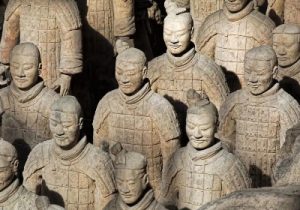
Terracotta Warriors
Start your day early in Xian with a visit to the Terracotta Warriors. After breakfast, it's about a 1-hour drive to the site, where our guide will share fascinating facts about this discovery. The Terracotta Warriors consists of over 8,000 life-sized soldiers, each with unique features.
Spend three hours exploring the site. Start with Pit 1, the largest, where you’ll see the main army, horses, and chariots. Then, move on to Pit 2, which displays cavalry, infantry, and archers, followed by Pit 3, thought to be the command center.
After the visit, enjoy lunch at a local restaurant, then head back to downtown Xian. Visit the Ming Dynasty City Wall next, where you can rent a bike and cycle around the 14-kilometer fortification. The ride takes 1.5 to 2 hours and offers great views of both the historical and modern parts of Xian.
Next, take a short walk to the nearby Muslim Quarter. This lively area is known for street food and vibrant market stalls. Try local snacks like kebabs, fried bread, and sweet treats. Don’t miss the Yangrou Paomo, a traditional dish of lamb soup with crumbled flatbread. As you explore the market, you’ll find souvenirs, handicrafts, and more, offering a glimpse into the local culture.
Take a morning flight from Xian to Lhasa Gonggar Airport, where our guide will greet you upon arrival. You'll then be driven straight to your hotel in Lhasa. The rest of the day is free for you to relax, adjust to the altitude, and get comfortable in this unique city on the Tibetan Plateau. Use this time to rest and prepare for your upcoming adventures.
Lhasa's altitude is around 3,656 meters (11,995 feet) above sea level.
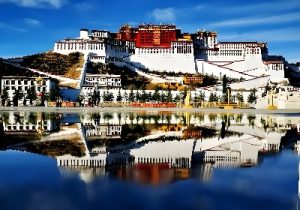
Potala Palace
After breakfast, our guide and driver will meet you at your hotel lobby. We will start the day with a visit to the Potala Palace.
The Potala Palace, perched at 3,700 meters (12,100 feet) on Red Hill in Lhasa, is an iconic symbol of Tibetan Buddhism. It consists of two main sections: the Red Palace, home to chapels and golden stupas that contain the remains of several Dalai Lamas, and the White Palace, once the Dalai Lama's residence. With over 1,000 rooms, 10,000 shrines, and countless artifacts, including murals and sculptures, the palace showcases Tibet's rich culture. It was built in the 7th century by King Songtsen Gampo and expanded in the 17th century by the 5th Dalai Lama. It served as the winter residence of the Dalai Lama and Tibet's political center.
In the afternoon, we will visit Jokhang Monastery and explore the lively Barkhor Street that circles around it. Jokhang Monastery is the holiest site in Tibetan Buddhism. Located near the Potala Palace, it attracts many pilgrims. Founded by King Songtsen Gampo in the 7th century, it houses Buddha statues brought by his wives, Princess Wencheng of Tang China and Princess Bhrikuti of Nepal. Over time, the monastery has been expanded but still retains its original charm. We will visit its sacred halls and admire the beautiful artwork. Barkhor Street, a bustling market that surrounds the Jokhang Temple, offers a glimpse into Tibetan life. It is both a pilgrimage route and a lively market where visitors can buy traditional Tibetan crafts, jewelry, and souvenirs.
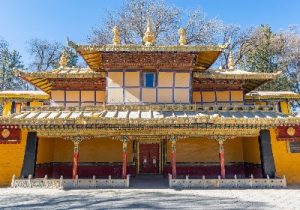
Norbulingka
Norbulingka, meaning "Treasure Garden" in Tibetan, is a lovely palace and garden located on the western outskirts of Lhasa. Built in the mid-18th century by the 7th Dalai Lama, Kelsang Gyatso, it was later expanded by successive Dalai Lamas. It became the traditional summer residence for the Dalai Lamas starting in the 1780s. The complex covers about 36 hectares (89 acres) and includes palaces, chapels, pavilions, and gardens. Visitors can explore these areas to learn about the Dalai Lamas' lifestyle and enjoy the peaceful beauty of Tibet.
Sera Monastery, founded in 1419 by Jamchen Chojey, is one of the "Great Three" Gelugpa universities of Tibetan Buddhism. Located just north of Lhasa, it is famous for its scholarly traditions, impressive architecture, and vibrant monastic debates. The monastery continues to be an important center for Tibetan Buddhism and attracts visitors interested in its deep religious and cultural history. A highlight of Sera Monastery is its lively monastic debates. Held in the afternoon, these debates involve monks rapidly exchanging questions and answers, accompanied by hand claps and dramatic gestures. Visitors can observe this unique tradition, which offers a fascinating look into the intellectual aspects of Tibetan Buddhism.
Drepung Monastery, founded in 1416 by Jamyang Chojey, grew rapidly to become one of Tibet's largest monasteries, housing over 10,000 monks at its peak. It played a crucial role in educating many important Tibetan lamas, including the Dalai Lamas, before the Potala Palace became the main residence of the Dalai Lama. Drepung remains a vital center for Tibetan Buddhist teachings, contributing significantly to the spread of Tibetan Buddhism worldwide.
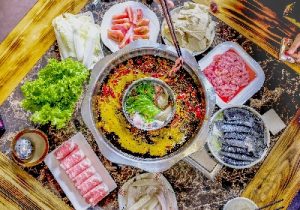
Sichuan Hot Pot
Today, we will fly from Lhasa to Chengdu. After arriving, our guide and driver will meet you and take you to your hotel. The rest of the day is free for you to relax and adjust after your high-altitude journey.
In the evening, we will enjoy a dinner with traditional Sichuan dishes. Afterward, we will attend the famous Sichuan Opera, known for its stunning mask-changing performance.
Sichuan Opera is a traditional Chinese art form famous for its "Bian Lian" or mask-changing act. Originating in Sichuan, this performance mixes music, drama, acrobatics, and expressive facial movements. The quick change of masks represents shifts in mood or character, adding an element of magic. The mask transitions are performed with skillful hand movements and choreography, creating a captivating effect that has amazed audiences for centuries.
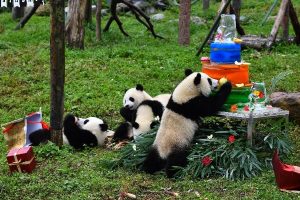
Pandas in Chengdu
After breakfast, our guide and driver will meet you at the hotel lobby and transfer you to the Chengdu Research Base of Giant Panda Breeding. You'll visit the pandas during their most active time, typically in the morning when they are being fed. At the base, observe the giant pandas eating bamboo, playing, and interacting. You'll also see red pandas and visit the panda kindergarten where the young cubs play. It's a heartwarming sight to watch the baby pandas tumble around. Afterward, enjoy lunch at a local restaurant or the base’s cafeteria, which offers simple meals.
In the afternoon, we will continue the tour with a visit to Wuhou Shrine and Jinli Old Street. Wuhou Shrine honors Zhuge Liang, the famous chancellor of the Shu Kingdom during the Three Kingdoms period, known for his wisdom and strategy. The shrine features traditional architecture with beautiful gardens and statues, providing a peaceful atmosphere and a taste of ancient Chinese design. Next, explore Jinli Old Street, known for its traditional Sichuan-style buildings, lively market, and variety of local snacks and crafts. Enjoy shopping, tasting local delicacies, and soaking in the vibrant atmosphere.
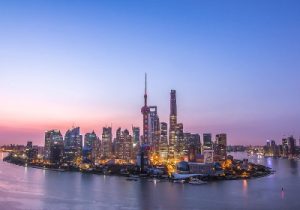
Bund
In the morning, we’ll fly from Chengdu to Shanghai. Upon arrival, our guide and driver will meet us and take us to downtown Shanghai for sightseeing. Our first stop will be the Shanghai Museum, where we’ll explore its rich collection of ancient Chinese art and artifacts. After that, we’ll visit the Bund along the Huangpu River, where the modern skyline of Shanghai contrasts with its historic colonial buildings.
The Shanghai Museum showcases the best of Chinese art and history. With its impressive collections and architecture, it’s a must-see for anyone interested in Chinese culture. The museum’s exhibits cover a wide range of ancient Chinese bronzes, ceramics, paintings, and calligraphy. One special gallery focuses on the diverse cultures of China’s ethnic minorities, displaying clothing, textiles, masks, and other items that reflect their traditions and lifestyles.
The Bund’s history began in the mid-19th century. During this time, the Bund became a financial center, with banks, trading companies, and consulates setting up in grand European-style buildings along the river. The architecture features styles like Gothic, Baroque, Neo-Classical, and Renaissance, showing the influence of the colonial powers in Shanghai.
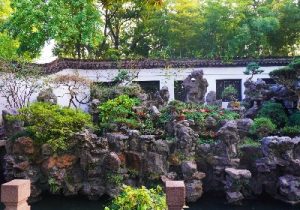
Yu Garden
Visit Yu Garden, a classical Chinese garden in the Old City. Wander through pavilions, rockeries, and ponds, enjoying the peaceful ambiance amid the city's bustle. Walk through Shanghai’s Old Town, or Nanshi. Explore narrow alleys filled with shops offering souvenirs, snacks, and local crafts. Don’t miss the City God Temple, a Taoist temple from the Ming Dynasty.
Enjoy a traditional Shanghainese meal, including specialties like xiaolongbao (soup dumplings), shengjianbao (pan-fried dumplings), and Shanghai-style noodles.
In the afternoon, visit the XinTianDi (French Concession), known for its tree-lined streets and European-style buildings. Stroll along Huaihai Road and Fuxing Road, where you’ll find boutiques, cafes, and galleries. Next, explore Tianzifang, a maze of narrow alleys filled with trendy shops, art studios, and cafes. The traditional Shikumen houses have been converted into modern spaces for shopping and dining.
In the evening, take a scenic cruise on the Huangpu River. Enjoy stunning views of the Shanghai skyline, with landmarks like the Oriental Pearl Tower and Shanghai Tower lit up against the night sky. Relax on the boat deck and capture photos of the dazzling cityscape.
Our guide and driver will meet you at the hotel and take you to the airport for your flight home or next journey!
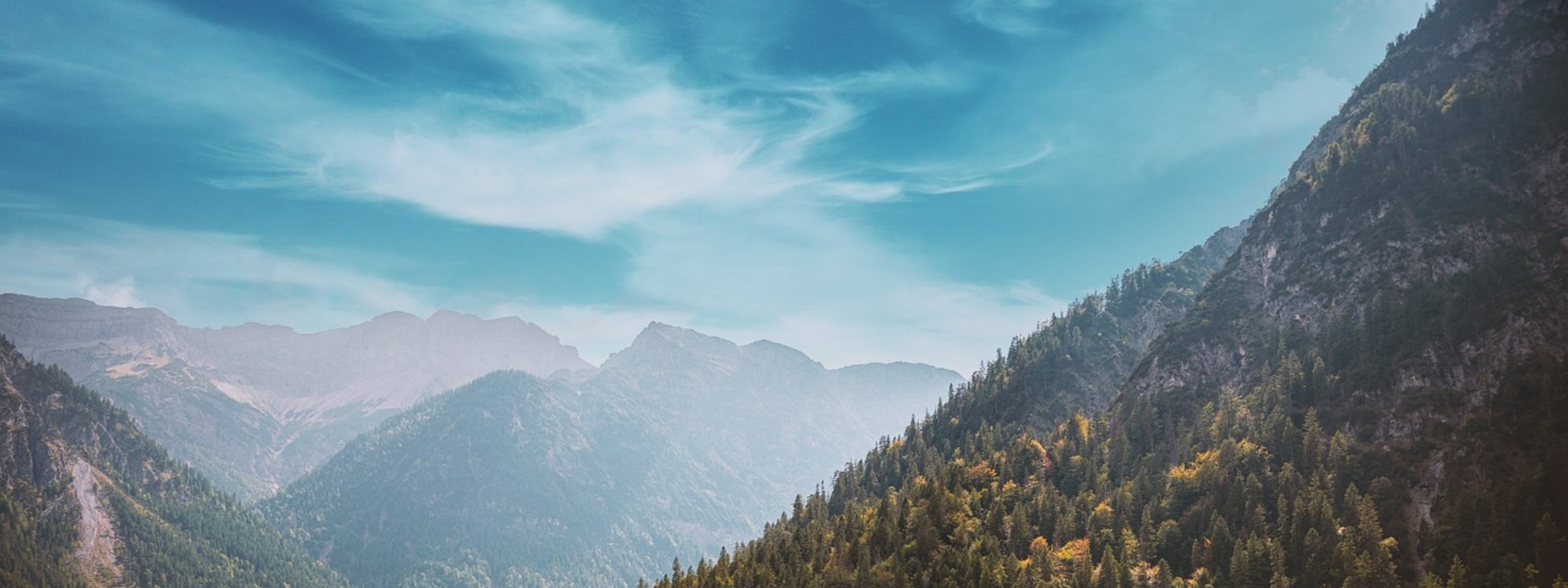
Our tours are flexible and can accommodate both small and large groups. Whether you’re planning an incentive trip for a handful of employees or a large-scale corporate retreat, we’ll work with you to ensure the experience is seamless, no matter the group size.
The booking process is straightforward. Simply contact our team with your desired travel dates and group details. For optimal availability, we recommend booking at least 2-3 months in advance, especially for a unique destination like Tibet, to allow time for permits and logistics.
Yes, we provide comprehensive support with visa applications and Tibet travel permits. Our experienced team will guide you through the visa process and ensure that all necessary documentation is in order, ensuring a smooth experience for your group.
Yes, we handle all aspects of accommodation and transportation. We partner with trusted hotels and transport services to ensure your corporate group enjoys comfort and convenience. Whether you're looking for business-class accommodations or specific transport preferences, we’ll manage every detail for you.
We understand that plans can change. If you need to modify your booking, simply contact our customer support team. We offer flexible policies for adjustments based on availability, and we'll work to accommodate your new travel preferences and schedule changes.





